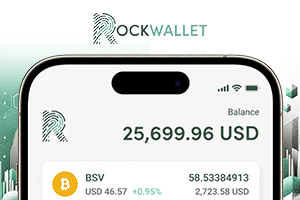|
Getting your Trinity Audio player ready...
|
Cloud mining has surged in popularity as a seemingly accessible way for individuals to mine cryptocurrencies like BSV and BTC, without investing in expensive hardware or managing complex setups. Users can earn a share of mined coins with minimal effort by renting computational power from remote data centres. Recent developments in 2025, driven by a bullish crypto market and pro-crypto policies, have brought renewed attention to cloud mining platforms like Zaminer, HashFly, and PAIRMiner. However, alongside these advancements, warnings about scams, profitability challenges, and centralization risks highlight why cloud mining often fails to benefit users as promised, making on-site mining a more reliable alternative for those seeking control and long-term value.
The cloud mining boom in 2025
The cryptocurrency market’s recovery, with BTC breaking $94,000 in January 2025 and BSV climbing to $59.53, has fueled interest in cloud mining. Platforms have capitalized on this momentum, launching new services and promotions. On May 19, 2025, Zaminer, a U.K.-based cloud mining platform, announced its eco-friendly approach, using solar and wind energy across 100+ data centers in Europe, North America, and Asia. Zaminer emphasizes high-efficiency NVIDIA and AMD GPUs, requiring no user hardware management, positioning itself as a sustainable and accessible option. Similarly, HashFly launched “cutting-edge” mining solutions on the same day, promising high hash rates and optimized energy use for Bitcoin and Ethereum mining. DNminer also debuted cloud mining services for Bitcoin and XRP, offering flexible plans to suit various budgets.
These platforms highlight the allure of cloud mining: no need for costly ASIC miners (priced at $1,000-$10,000) or technical expertise. For BSV, with transaction fees under $0.0007 and unbounded block sizes (up to 2GB), cloud mining providers like PAIRMiner, which offered a $150 signup bonus on May 7, 2025, tout the potential for frequent small rewards, appealing to investors betting on price growth. Posts on X reflect this enthusiasm, with VN Bit Cloud’s launch on May 20, 2025, promoting a 79% bonus to enhance accessibility. The Trump administration’s pro-crypto policies, including designating Bitcoin and XRP as strategic reserves, have further boosted investor confidence, driving cloud mining’s appeal.
The dark side of cloud mining
Despite the hype, recent warnings underscore cloud mining’s pitfalls. On May 15, 2025, Brave New Coin reported that cloud mining scams, such as Tophash and GlobaleCrypto, continue to proliferate, defrauding users with false promises of high returns. These scams often mimic legitimate platforms, using fake testimonials and unrealistic profit projections. A 2024 CryptoCompare analysis found that many cloud mining contracts for BSV and BTC yielded negative returns after one year, with maintenance fees (e.g., $0.01 per GH/s daily) often exceeding earnings, especially at BSV’s current ~$35 price; CoinGecko, 2025.
Transparency remains a critical issue. Users have little visibility into hash power allocation or operational efficiency, relying entirely on providers. In 2023, a major cloud mining platform faced lawsuits for failing to deliver payouts, with users losing thousands. Centralization is another concern. Cloud mining concentrates hash power in third-party data centers, contradicting BTC’s decentralized ethos, prioritizing data integrity and sovereignty. This centralization risks hacks or shutdowns, as seen in a 2022 case where a provider abruptly ceased operations, leaving users empty-handed.The case for on-site mining
On-site mining, where users operate their own hardware, offers a compelling alternative. While requiring upfront investment—ASICs for BSV cost $1,000-$10,000—users gain full control, enabling optimization of hardware and pool selection (ASIC Miner Value, 2025). BSV’s high-throughput model allows miners to process thousands of transactions per block, earning consistent fees despite diminishing block subsidies. A 2025 Association study estimated break-even within 18-24 months for on-site miners, far outperforming cloud mining’s uncertain profitability.
On-site mining also bolsters BSV’s network security, critical given its low hash rate (BitInfoCharts, 2025). Miners contribute directly to decentralization, reducing the risks of attacks. Additionally, on-site miners can leverage BSV’s enterprise applications, like timestamping or smart contracts, for extra revenue (BSV Blockchain Association, 2024). Renewable energy options, such as solar, further lower costs, with U.S. electricity averaging $0.12-$0.20 per kWh (EIA, 2025).
Challenges and outlook
On-site mining isn’t without challenges. High initial costs and noise pollution, reported in rural U.S. communities in 2025, pose barriers. Technical expertise is also required, unlike cloud mining’s simplicity. However, declining ASIC prices (under $2,000 for used models) and online tutorials make it more accessible (ASIC Miner Value, 2025; Reddit, 2025).
Cloud mining’s recent developments highlight its appeal but mask persistent issues: scams, high fees, and centralization. For BSV miners, on-site operations align better with the network’s scalable, decentralized vision, offering control and profitability. As the crypto market matures, users must weigh cloud mining’s convenience against its risks, opting for on-site mining to truly benefit from their efforts.
Watch | Bitcoin mining in 2025: Is it still worth it?

 08-09-2025
08-09-2025 





